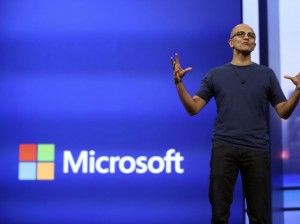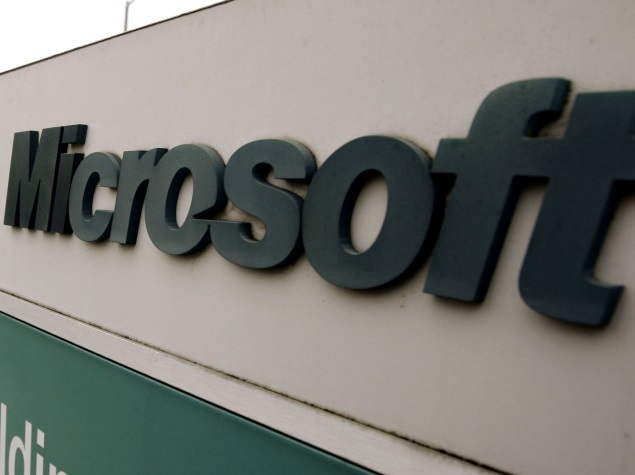 Microsoft CEO Satya Nadella painted an optimistic vision of the future on Tuesday, saying that the next version of Windows will be unified across screens of all sizes and that two money-losing units Nokia phones and Bing search would become profitable in 2016.
Microsoft CEO Satya Nadella painted an optimistic vision of the future on Tuesday, saying that the next version of Windows will be unified across screens of all sizes and that two money-losing units Nokia phones and Bing search would become profitable in 2016.
The agenda, announced on Tuesday as Microsoft reported fourth-quarter earnings that beat Wall Street expectations, helped boost the company’s shares, which added 52 cents, or 1.2 %, to $45.35 in after-hours trading.
Five months after taking the reins from Steve Ballmer, Nadella further outlined how the software company would be acting differently under his watch.
“I hope you can see that we have bold ambitions and we have made a lot of progress,” Nadella said.
His comments followed the announcement last week that the company is cutting 18,000 people — mostly related to the $7.3 billion purchase of Nokia’s smartphone unit in April.
Eliminating overlap related to the deal is expected to save $1 billion annually, the company said on Tuesday, higher than the $600 million in savings it estimated in September when it announced the achievement.
On a conference call with investors, Nadella also acknowledged the headache the company had created for software developers by making multiple versions of Windows that work differently on phones, PCs and tablets, Xbox and other devices. The company is aiming to simplify that so developers can create apps that work on many devices at once.
“We are bringing teams together to approach Windows as one equal system very different than we ourselves have done in the past,” he said.
Kirk Materne, an forecaster with Evercore Partners, welcomed the direction, and noted that the company trimmed operating expenses when excluding the Nokia acquisition.
The result “further highlights the fact that Microsoft is taking a disciplined stand on spending, which is something investors have been looking for for a while,” Materne said.
For the fourth quarter through June 30, earnings took a hit from the money-losing Nokia devices business, but growth in internet-based computing services to businesses boosted results.
Net income fell 7% to $4.61 billion, or 55 cents per share, from $4.97 billion, or 59 cents per share, a year ago.
Losses at Nokia cut 8 cents per share from earnings. Microsoft lost another net 3 cents on restructuring and tax-related items. Excluding those items, earnings hit 66 cents per share, beating the 60 cents expected by analysts polled by FactSet.
Revenue rose 18% to $23.4 billion, although $2 billion came from the Nokia unit. That was slightly better than the $23 billion analysts were looking for. Excluding the acquisition, revenue would have risen 10%.
Microsoft is transitioning to provide more of its software and services to mobile devices that are linked to distant back-end servers known as the cloud. That’s a departure from its long-time strengths in the Windows personal computer operating system and software tied to that.
Nadella said revenue from commercial cloud services such as its Office 365 software suite for enterprises and Azure computing platform more than doubled to an annual rate of $4.4 billion.
“Today’s conversation and results show how some of the bets we have made with our cloud are paying off,” he said.
Still, Windows revenue from manufacturing partners rose 3%, boosted by companies buying computers in developing markets. It also continued to ride the wave of companies upgrading their computers when Microsoft ended support in April for its 12-year-old Windows XP operating system.
The company is also attempting to do more to craft its own devices, to spur consumer demand and to prod its hardware partners to innovate around the Windows platform.
However, revenue from its Surface tablet — which it touted as a replacement for both a laptop and a tablet — slipped to $409 million from $500 million in the previous quarter. The Surface business continued to lose money despite the launch of the Surface Pro 3 in late June, although early sales are outpacing earlier versions.
It sold 1.1 million Xbox consoles, benefiting from an effective $100 price cut on its latest Xbox One when it allowed consumers to buy it without the Kinect motion detecting sensor.
The Nokia business sold 5.8 million Lumia smartphones, though it said lower-priced items drove much of the volume, along with 30.3 million non-Lumia phones that it is discontinuing.






